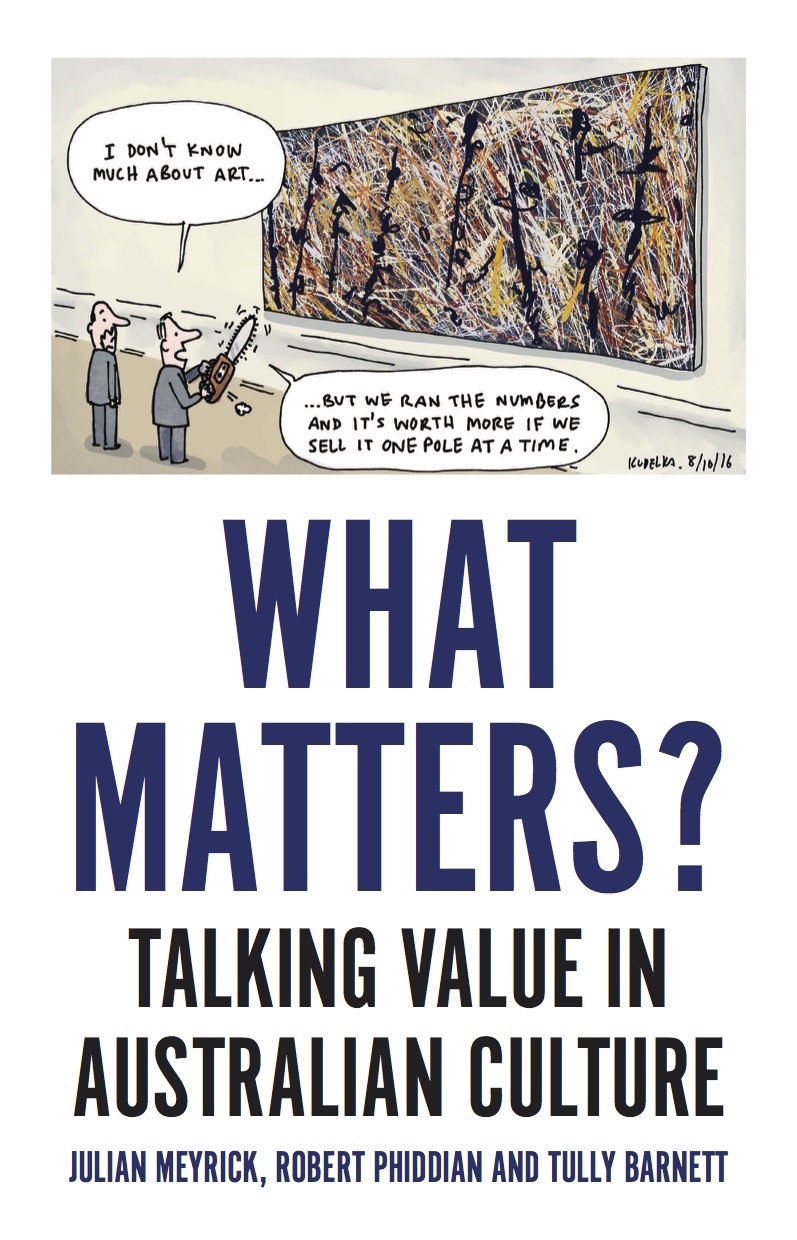When did works of art become a matter of statistical analysis? And why? Three Flinders University scholars, Julian Meyrick, Robert Phiddian and Tully Barnett have spent four years researching the subject for their new book What Matters? Talking Value in Australian Culture. The aim they say is “to rescue discussion about the value of culture from three flawed approaches – the bland but deadly platitudes of policy-speak; the obscure locutions of cultural theory; and the elitist ‘club’ talk that gathers around particularly high art forms.” The following extract comes from the Introduction to the book.

When did culture become a number? When did the books, paintings, poems, plays, songs, films, games, art installations, clothes, and all the myriad objects that fill our lives and which we consider cultural, become a matter of statistical measurement? When did the value of culture become solely a matter of the quantifiable benefits it provides, and the latter become subject to input–output analysis in what government budgets refer to as ‘the cultural function’? When did experience become data?
Perhaps a more important question is why did it happen, and why does it keep happening? Also, how does it...










Comments
Log in to join the conversation.